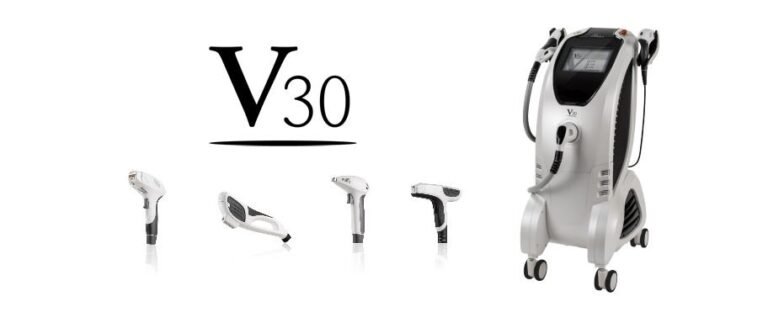Testosterone Replacement Therapy (TRT) offers a promising solution for those with low testosterone levels, aiming to restore optimal hormone balance. This therapy can significantly improve energy, mood, muscle mass, and sexual health. Suvita Medical Aesthetics is a beacon for those seeking a unique wellness experience. While the benefits of TRT are substantial, understanding the potential risks and side effects is crucial. We delve into the advantages and drawbacks of TRT, providing a balanced perspective to help you make informed health decisions. By examining both positive outcomes and possible complications, you can determine if TRT is right for you.
What is Testosterone Replacement Therapy?
Testosterone Replacement Therapy (TRT) is a therapy designed to restore testosterone levels in individuals experiencing low testosterone, often referred to as “low T.” Here’s a detailed look at what TRT entails:
- Understanding Testosterone: Testosterone is a vital hormone primarily produced in the testicles for men & in smaller amounts in the ovaries for women. Its important functions include muscle mass, bone density, red blood cell production, mood regulation, and sexual function. In addition to aging and certain medical conditions, medications, and lifestyle choices, low testosterone levels can be caused by a range of factors. Symptoms of low testosterone may include fatigue, depression, reduced libido, and muscle loss.
- Purpose of Testosterone Replacement Therapy: The primary goal of TRT is to restore testosterone to normal levels, alleviating the symptoms associated with low testosterone. By balancing hormone levels, TRT can significantly enhance energy, mood, muscle mass, and sexual health, improving overall quality of life.
- Who Needs Testosterone Replacement Therapy? Men who experience symptoms of low testosterone and have confirmed low levels through blood tests are the primary candidates for TRT. Although less common, women with specific hormonal imbalances may also benefit from TRT under careful medical supervision. Older adults who face a natural decline in testosterone levels and experience related symptoms may find TRT beneficial.
- Administration Methods: Testosterone Replacement Therapy can be administered through various methods, each tailored to individual needs. Intramuscular injections are typically given every one to two weeks, delivering a direct dose of testosterone. Transdermal patches provide a steady hormone release through the skin. Topical gels, applied daily, offer consistent testosterone levels. Implanted pellets gradually release the hormone over several months, ensuring long-term stability. Though less common due to potential liver side effects, oral capsules are also an option for testosterone delivery. Each method aims to restore and maintain optimal testosterone levels effectively.
- Potential Risks & Side Effects: Testosterone Replacement Therapy (TRT) is safe for almost all patients. However, like any other therapy, it carries some potential risks and side effects for a few individuals. These include an increased risk of cardiovascular issues such as heart attack and stroke. It may contribute to prostate enlargement and raise the risk of prostate cancer. TRT may exacerbate sleep apnea in some individuals and may cause skin reactions like acne and rashes, particularly with topical applications. Additionally, there may be an elevated risk of blood clots, necessitating regular monitoring by a healthcare provider to ensure safety and manage any adverse effects effectively.
- Monitoring and Adjusting Treatment: Continuous monitoring of testosterone levels and overall health is essential to ensure the safety and effectiveness of TRT. Based on test results and symptom improvement, healthcare providers may adjust dosages to optimize treatment outcomes. A healthy lifestyle, which includes regular exercise and a balanced diet, can enhance the benefits of TRT.
Benefits of Testosterone Replacement Therapy
Testosterone Replacement Therapy (TRT) provides numerous advantages for individuals experiencing low testosterone levels. This therapy can significantly enhance various aspects of health and well-being. Here are the key benefits of TRT:
- Increased Energy Levels: TRT helps restore normal testosterone levels, increase energy, and reduce fatigue. Many individuals report feeling more energetic and capable of handling daily tasks more effectively. Enhanced energy levels contribute to better physical performance and endurance, making engaging in regular activities and exercise easier.
- Enhanced Mood and Mental Health: Low testosterone levels are often linked to mood swings, depression, and anxiety. TRT can help stabilize mood & improve mental health by addressing these hormonal imbalances.
- Promotes Emotional Well-Being: With balanced testosterone levels, individuals often experience a more positive outlook, reduced irritability, and improved emotional stability.
- Improved Muscle Mass & Strength: Testosterone plays a crucial role in muscle development. TRT helps increase muscle mass and strength, making building and maintaining a fit and toned body easier. Enhanced testosterone levels support quicker recovery from exercise and injuries, reducing downtime and promoting consistent physical activity.
- Enhanced Sexual Health: One of the most immediate benefits of TRT is an increase in libido. Individuals often report heightened sexual desire and improved overall sexual satisfaction. TRT can help address erectile dysfunction by improving blood flow and hormonal balance, leading to better sexual performance and confidence.
- Better Bone Density: Testosterone is vital for bone health. TRT helps maintain and improve bone density, reducing the risk of osteoporosis and fractures. TRT promotes bone health and contributes to overall skeletal strength and stability, which is especially important as individuals age.
- Enhanced Cognitive Function: Balanced testosterone levels are associated with better cognitive function, including improved memory and concentration. TRT can reduce brain fog and enhance mental clarity, making it easier to concentrate and make decisions.
- Cardiovascular Health Benefits: While the relationship between testosterone and cardiovascular health is complex, some studies suggest that TRT can support heart health by improving lipid profiles and reducing inflammation. Enhanced testosterone levels can lead to better blood circulation, improving cardiovascular function.
- Better Sleep Quality: TRT can help alleviate sleep apnea symptoms, improving sleep quality and overall health. With balanced hormones, individuals often experience more restful and uninterrupted sleep, contributing to better daily functioning.
- Enhanced Physical Appearance: TRT can help reduce body fat, particularly in the abdominal area, contributing to a leaner and more toned appearance. Improved hormone balance can lead to healthier skin, reducing acne and dryness.
- Improved Overall Quality of Life: TRT can significantly enhance the overall quality of life, making individuals feel more vibrant and capable. The physical and mental improvements associated with TRT can increase self-confidence and a more positive self-image.
Consult a Professional
Testosterone Replacement Therapy (TRT) offers a wide range of benefits for those with low testosterone levels. By restoring hormonal balance, TRT helps individuals feel more energetic, confident, and capable. Consulting with a professional medical aesthetician will guide you toward the best treatment option.
Takeaway
Testosterone Replacement Therapy can significantly boost your quality of life. If you’re experiencing symptoms of low testosterone, now is the time to take action. Contact Suvita Medical Aesthetics today to learn more about how TRT can benefit you. Our experts are here to guide you through every step of the process.



